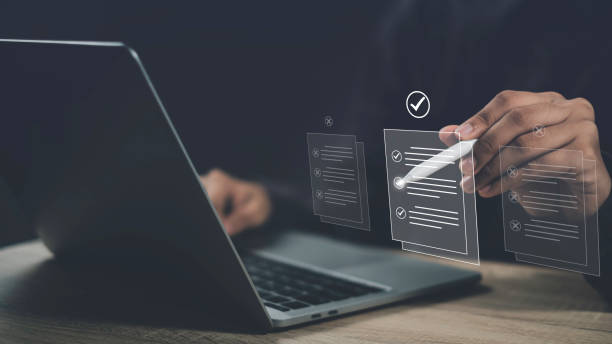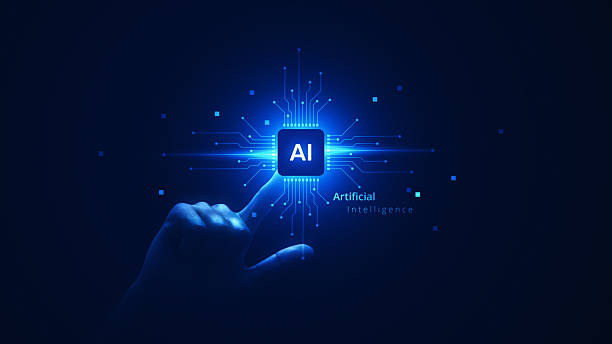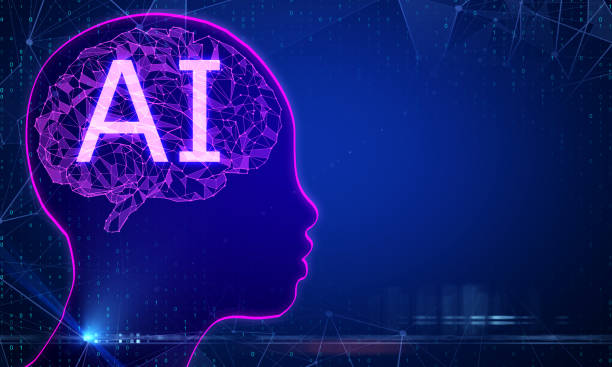What is On-Page SEO and Why is it Important?
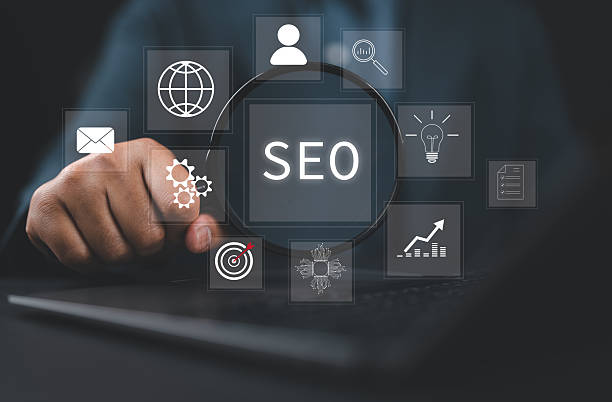
On-Page SEO refers to a set of actions we take within our website to improve its ranking in Google search results.
These actions include optimizing content, website structure, HTML tags, and other SEO-related factors.
The importance of On-Page SEO lies in helping search engines better understand your website’s content and recognize its relevance to user search queries.
When search engines can properly understand your content, the likelihood of your website appearing in higher search result rankings increases.
To start successful SEO, you need SEO tools to help you in this endeavor.
On-Page SEO is, in fact, the foundation of a successful SEO strategy.
Without internal optimization, your efforts for external #link-building and other SEO methods may not yield the desired results.
Internal optimization helps you create a website with high-quality content and a structure suitable for search engines, which in turn increases organic traffic and improves your website’s ranking.
This guide helps you familiarize yourself with the principles and techniques of On-Page SEO so you can effectively optimize your website.
External website linking is also very important and helps your site’s SEO.
Tired of missing business opportunities due to not having a professional corporate website? Don’t worry anymore! With Rasaweb’s corporate website design services:
✅ Your brand’s credibility and professionalism will increase.
✅ You will attract more customers and sales leads.
⚡ Get a free consultation to get started now!
Keyword Research; The First Step in On-Page SEO
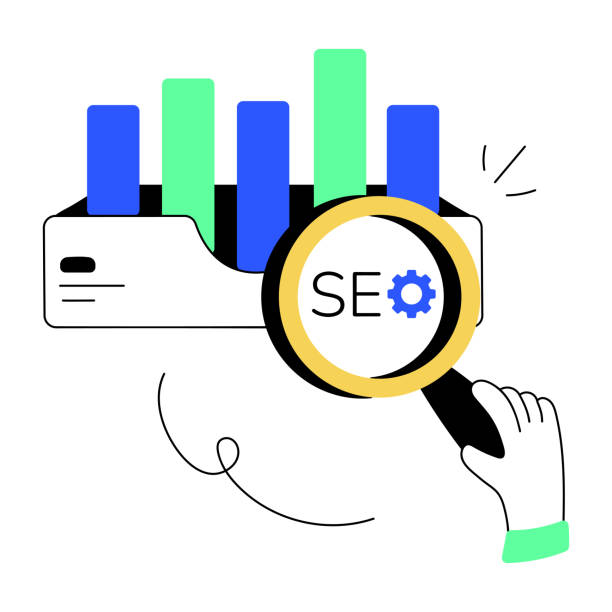
Keyword research is the first and most important step in On-Page SEO.
You need to find the words that users use to search for your products or services.
These keywords must be relevant to your business and have a suitable search volume.
Using tools like #Google Keyword Planner, #Ahrefs, and #SEMrush can help you find suitable keywords.
After finding keywords, you should use them naturally and relevantly in your website content.
Avoid using excessive keywords (Keyword Stuffing), as this can lead to your website being penalized by Google.
For example, for successful SEO, you should pay attention to keywords.
When choosing keywords, pay attention to the #user’s_intention when searching.
Is the user looking for information, or intending to buy? Your keywords should match the user’s intention.
Also, pay attention to the length of the keywords.
Long-Tail Keywords usually have less competition and can attract more targeted traffic to your website.
Try to use a combination of short and long keywords in your On-Page SEO strategy.
For example: SEO site consulting.
Optimizing Titles and Meta Descriptions

Title Tags and Meta Descriptions play an important role in On-Page SEO.
The page title is the first thing users see in search results.
The page title should be attractive, relevant to the page content, and include the main keyword.
The length of the page title should be between 50 and 60 characters to be fully displayed in search results.
The meta description is also a summary of the page content that is displayed below the page title in search results.
The meta description should be attractive and persuasive, encouraging users to click on your website link.
The length of the meta description should be between 150 and 160 characters.
The meta description does not have a direct role in ranking, but it can affect the click-through rate (CTR) and, as a result, help improve your website’s ranking.
On-page SEO is essential to increase the site’s ranking.
On-Page SEO is an important process to improve your website’s ranking in search results.
Doing this process helps you to dramatically increase your website’s ranking.
th, td {
border: 1px solid #ddd;
padding: 8px;
text-align: left;
}
th {
background-color: #f2f2f2;
}
.highlight {
font-weight: bold;
color: #007bff;
}
| Element | Description | Best Practice |
|---|---|---|
| Title Tag | The main title of the page that appears in search results. |
|
| Meta Description | A summary of the page content that appears below the page title. |
|
Optimizing URLs; A Logical and SEO-Friendly Structure
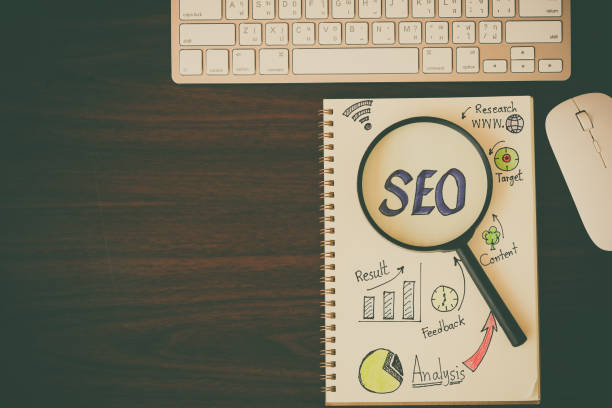
URLs (Uniform Resource Locators) are the addresses of your website pages.
URLs should be short, readable, and include the main keyword.
The structure of URLs should be logical and hierarchical so that users and search engines can easily navigate your website.
Avoid using special characters and numbers in URLs.
Instead of using numeric IDs, use keywords related to the page content in URLs.
This helps search engines to better understand the topic of the page and improve your website’s ranking.
A suitable URL is very important in On-Page SEO.
Suitable #On-Page_SEO makes it easier for Google bots to understand our content.
For example, instead of using an inappropriate URL such as `example.com/page?id=123`, use a suitable URL such as `example.com/blog/seo-internal`.
This URL is more understandable for both users and search engines and can help improve your website’s ranking.
Also, avoid using uppercase letters in URLs and always use lowercase letters.
Do you dream of a thriving online store but don’t know where to start?
Rasaweb is your comprehensive e-commerce website design solution.
✅ Attractive and user-friendly design
✅ Increased sales and revenue⚡ Get a free consultation
Content Optimization; The King of On-Page SEO
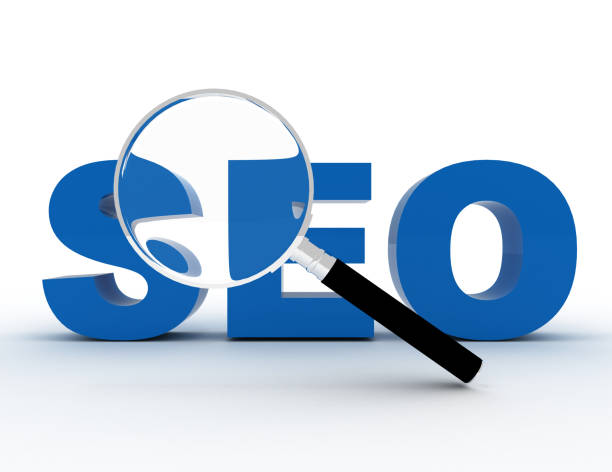
Content is the king of On-Page SEO.
Your content should be high-quality, valuable, relevant to user needs, and unique.
Update your content regularly and use keywords naturally and relevantly in it.
Your content should answer users’ questions and solve their problems.
Use images, videos, and other multimedia elements to make your content more attractive.
Your content should be such that users want to share it with others.
SEO optimization of content is very important.
Use headings and subheadings to organize your content.
Headings and subheadings help users and search engines to better understand the structure of your content.
Use appropriate HTML tags for headings and subheadings (H1, H2, H3, etc.).
The H1 tag should be used for the main title of the page and should only be used once on the page.
Use H2 to H6 tags for subheadings and organize them in order of importance.
Image Optimization; Suitable Size and Alt Text

Images play an important role in the attractiveness of your website, but if they are not properly optimized, they can slow down the website loading speed and damage On-Page SEO.
Save your images in the appropriate format (such as JPEG or PNG) and reduce their size as much as possible.
Use image compression tools to reduce the size of images without compromising quality.
Write a suitable Alt Text for each image.
Alt text helps search engines to understand the subject of the image and is displayed to users if the image does not load.
Alt text should be relevant to the image content and include the main keyword.
In addition to Alt Text, use filenames related to the image content.
For example, instead of using an inappropriate filename such as `IMG_1234.jpg`, use a suitable filename such as `seo-internal-guide.jpg`.
This helps search engines to better understand the relationship between the image and the page content.
Optimizing photos can help On-Page SEO.
Internal Link Optimization; Suitable Site Structuring
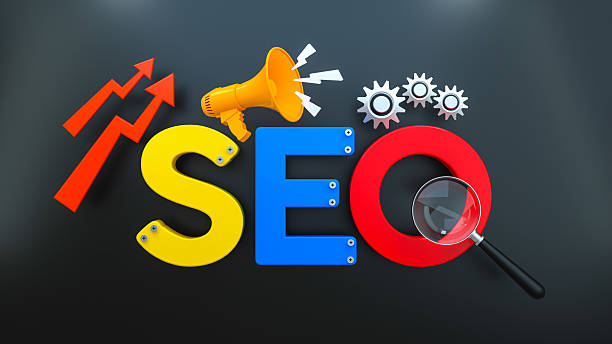
Internal Links are links that point from one page to another on your website.
Internal links help search engines to better understand the structure of your website and recognize the relationship between pages.
Internal links also help users to easily navigate your website and access the information they need.
Use internal links to point to pages relevant to the content of the current page.
Use descriptive and relevant Anchor Text for internal links.
The anchor text should indicate what the destination page is about.
On-Page SEO without internal link building is meaningless.
th, td {
border: 1px solid #ddd;
padding: 8px;
text-align: left;
}
th {
background-color: #f2f2f2;
}
.highlight {
font-weight: bold;
color: #007bff;
}
| Element | Description | Best Practice |
|---|---|---|
| Anchor Text | Clickable text that links to another page. |
|
| Number of Internal Links | The number of links that link from one page to other pages. |
|
Avoid creating long chains of internal links.
That is, do not link from one page to another and then to another page.
This can confuse users and search engines.
Make sure that all important pages of your website are accessible through internal links.
Pages that are not linked to may be ignored by search engines.
Website Speed Optimization; Better User Experience, Higher Ranking

Website speed is one of the important factors in On-Page SEO and user experience.
Users expect your website to load quickly.
If your website is slow, users may leave it and visit another website.
Website loading speed also affects your website’s ranking in search results.
Google gives a better ranking to websites that load faster.
To improve your website speed, you can use various methods, including: reducing the size of images, using #browser_cache, using content delivery networks (CDNs), and optimizing website code.
Also, use website speed test tools like Google PageSpeed Insights and GTmetrix to identify your website’s speed problems.
These tools help you identify the weaknesses of your website and provide solutions to improve its speed.
Optimizing site speed has a great effect on On-Page SEO.
Does your current corporate website present a worthy image of your brand and attract new customers?
If not, turn this challenge into an opportunity with Rasaweb’s professional corporate website design services.
✅ Dramatically improves the credibility and image of your brand.
✅ Paves the way for you to attract new leads and customers.
⚡ Contact Rasaweb now for a free and specialized consultation!
Mobile Optimization; Easy Access on Any Device

Given the increasing use of mobile devices, optimizing your website for mobile (Mobile-Friendly) is very important.
Your website should be displayed well on mobile devices and users should be able to navigate it easily.
Google gives a better ranking to websites that are optimized for mobile.
To optimize your website for mobile, you can use various methods, including: using Responsive Design, using readable and touchable fonts, and optimizing images and videos for mobile.
One of the goals of On-Page SEO is to optimize the website for mobile.
Also, use Google’s #Mobile-Friendly Test tool to check your website’s compatibility with mobile.
This tool helps you identify potential problems with your website and provide solutions to fix them.
Pay attention to this in #site_design.
Continuous Review and Improvement; On-Page SEO is a Dynamic Process

On-Page SEO is a dynamic process and requires continuous review and improvement.
You should regularly review the performance of your website and identify its weaknesses.
Use tools like Google Analytics and Google Search Console to review website traffic, keyword rankings, and technical problems with your website.
According to the results of the reviews, make the necessary changes to your website and continue to improve your On-Page SEO.
On-Page SEO is a permanent process.
Also, be aware of Google’s algorithm changes and update your SEO strategy based on these changes.
Google is constantly changing its algorithms to provide better search results to users.
If you are not aware of these changes, your website ranking may decrease.
In general, it can be said that On-Page SEO is a process that you should pay attention to for business development.
#Technical_SEO is also very important and you should also optimize it.
Frequently Asked Questions
| Question | Answer |
|---|---|
| What is On-Page SEO? | On-page SEO includes optimizing elements that are directly in your control and within your website. Its goal is to help search engines better understand the content of the page and improve its ranking. |
| Why is On-Page SEO important? | On-page SEO gives search engines clear signals about the content of the page, improves user experience, and increases the chances of attracting organic traffic. |
| What are the most important factors of On-Page SEO? | Keywords, Title Tag, Meta Description, URL structure, high-quality content, image optimization and internal links are among the most important factors. |
| What is the role of the Title Tag in On-Page SEO? | The title tag is one of the most important signals for search engines and users that specifies the main topic of the page. It should include the main keyword and be attractive. |
| How important is the Meta Description? | The meta description does not directly affect the ranking, but it can improve the click-through rate (CTR) by encouraging users to click. |
| How to optimize images for On-Page SEO? | By using a descriptive filename, appropriate Alt Text containing keywords, compression to reduce size and correct dimensions. |
| What is the effect of Internal Links on SEO? | Internal links help search engines to discover and index site pages, distribute authority (PageRank) throughout the site and improve user navigation. |
| Is page loading speed one of the On-Page SEO factors? | Yes, page loading speed is a critical factor in On-Page SEO and user experience. Slower pages can lead to higher bounce rates and lower rankings. |
| What are the characteristics of high-quality content for On-Page SEO? | High-quality content should be comprehensive, unique, relevant, reliable, readable and fully answer the needs and questions of users. |
| How can keywords be used in content? | Keywords should be used naturally in the title, subheadings, first paragraph, body text and alt text of images. Avoid Keyword Stuffing. |
And other services of Rasa Web Advertising Agency in the field of advertising
Smart Reporting: A dedicated service for growth and improved SEO ranking based on customizing user experience.
Smart Link Building: A combination of creativity and technology to improve SEO ranking through a content-centric SEO strategy.
Smart Brand Identity: An effective tool to increase the click-through rate by designing an attractive user interface.
Smart Google Ads: A combination of creativity and technology to increase sales by optimizing key pages.
Smart Data Analysis: A quick and efficient solution to increase the click-through rate by focusing on custom programming.
And more than hundreds of other services in the field of internet advertising, advertising consulting and organizational solutions
Internet Advertising | Advertising Strategy | Advertorial
Resources
What is On-Page SEO? Everything About On-Page SEO
,What is Internal SEO (On Page SEO)? Comprehensive On Page Optimization Guide
,What is Internal SEO and how to optimize the on-page SEO of the site?
,What is Internal SEO? | On-page SEO Optimization Techniques
Are you ready to transform your business in the digital world? Rasaweb Afarin Digital Marketing Agency, specializing in professional website design, SEO, and content marketing, offers a comprehensive solution for your growth and visibility. With us, discover the true potential of your brand.
📍 Tehran, Mirdamad Street, next to the Central Bank, South Kazerun Alley, Ramin Alley No. 6

